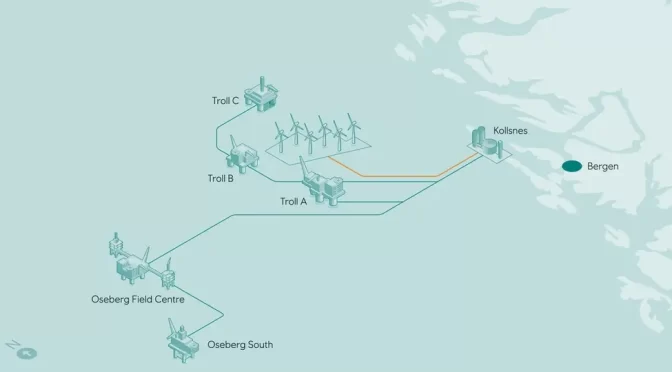Norway, a country known for its abundant natural resources and breathtaking landscapes, has long been a leader in the renewable energy sector. With a strong commitment to sustainability and a rich history of hydropower production, it comes as no surprise that the Scandinavian nation is now turning its attention to offshore wind energy. As the global demand for clean energy continues to grow, Norway is uniquely positioned to capitalize on its vast offshore wind potential, while also addressing the challenges that come with harnessing this powerful resource.
Offshore wind energy offers several advantages over its onshore counterpart, including stronger and more consistent wind speeds, which translate to higher energy production. Furthermore, offshore wind farms can be built on a larger scale, allowing for greater economies of scale and lower costs per unit of energy produced. With over 25,000 kilometers of coastline and vast areas of shallow waters, Norway has an estimated offshore wind potential of 14,000 terawatt-hours (TWh) per year, according to a recent study by the Norwegian University of Science and Technology (NTNU). To put this into perspective, the country’s total electricity consumption in 2019 was approximately 135 TWh.
The Norwegian government has recognized the potential of offshore wind energy and has taken steps to promote its development. In June 2020, the government announced the opening of two areas for offshore wind development, Utsira Nord and Sørlige Nordsjø II, with a combined capacity of 4.5 gigawatts (GW). This move is expected to attract both domestic and international investors, creating new opportunities for the country’s energy sector and contributing to the global transition towards renewable energy.
However, harnessing the power of offshore wind energy in Norway is not without its challenges. One of the main obstacles is the high cost of developing offshore wind farms, which can be up to twice as expensive as onshore projects. This is due to the need for specialized equipment, such as floating turbines, and the logistical challenges of constructing and maintaining the infrastructure in harsh marine environments. In addition, the country’s existing grid infrastructure may need to be upgraded to accommodate the increased electricity generation from offshore wind farms.
Despite these challenges, there are reasons to be optimistic about the future of offshore wind energy in Norway. Technological advancements, such as the development of more efficient turbines and floating platforms, are expected to drive down costs and make offshore wind projects more economically viable. Moreover, the Norwegian government has demonstrated its commitment to supporting the growth of the industry through various incentives and funding schemes.
One example of a successful offshore wind project in Norway is the Hywind Tampen floating wind farm, which is currently under construction. Developed by Equinor, the project will consist of 11 floating turbines with a combined capacity of 88 megawatts (MW), making it the largest floating wind farm in the world. Once operational, Hywind Tampen will supply electricity to two oil and gas platforms in the North Sea, reducing their greenhouse gas emissions by an estimated 200,000 tons per year.
In conclusion, the potential of offshore wind energy in Norway is vast, and the country is well-positioned to become a global leader in this rapidly growing industry. While there are challenges to overcome, the ongoing support from the government, coupled with technological advancements and successful projects like Hywind Tampen, demonstrate that Norway is on the right track to harnessing the power of its offshore wind resources. As the world continues to shift towards renewable energy, Norway’s commitment to offshore wind energy will not only benefit its own economy and environment but also contribute to the global fight against climate change.


